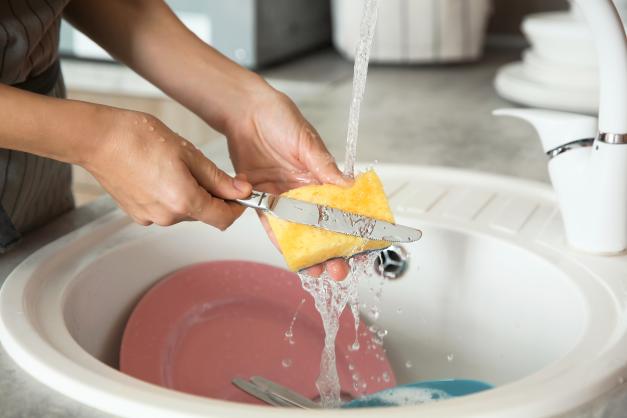
The vast majority of water on Earth’s surface, over 96%, is saline water in the oceans (USGS). Which means, even though water is plentiful there are limited resources of fresh water to relay on. Beyond cleaning, we also need water to drink and to grow food. The average household may use 88,000 gallons of water per year (REU2016). Within your home, faucets and clothes washers make up a significant portion of water use.

Through many modern innovations the average daily use of water has decreased 22% per household from 1999 to 2016 (REU2016). Efficiency in appliances has created dramatic reductions in water use overall. In 2016 a washing machine averaged 31 gallons of water per load, compared to 41 gallons in 1999, a 36% decrease (REU2016). Dishwashers has decreased water usage from 10 gallons per load in 1999, to 6.1 gallons in 2016.
Even with these improvements, it is important to consider how each of us can do our part to conserve water where possible.
Water Saving Tips
Do it efficiently
- Aim for Full Loads: The dishwasher uses the same amount of water and energy whether there’s an entire cabinet’s worth of dishes in there, or just a spoon. So aim for efficiency. Same with your laundry.
- Go Automatic: Studies show that automatic washing via an appliances is likely to use less water per load than washing by hand (Stamminger)
- Turn off the Tap: When you wash your hands or hand wash your dishes and clothes, be sure to turn off the tap when it is not in use.
- Upgrade: Replace old appliances with newer energy efficient models when possible.
Do it Once
- Do it right the first time: As much as possible, try to avoid re-washing the same items again. Re-washes means we use double the water!
- Avoid Pre-rinsing: It is best to avoid pre-rinsing whenever possible. Instead scrape the food off the plate into the garbage or disposal, then place those dishes right into the dishwasher.
- Pre-treat stains: By pretreating stains before washing, we can avoid rewashing the whole garment again if the stain is not removed.